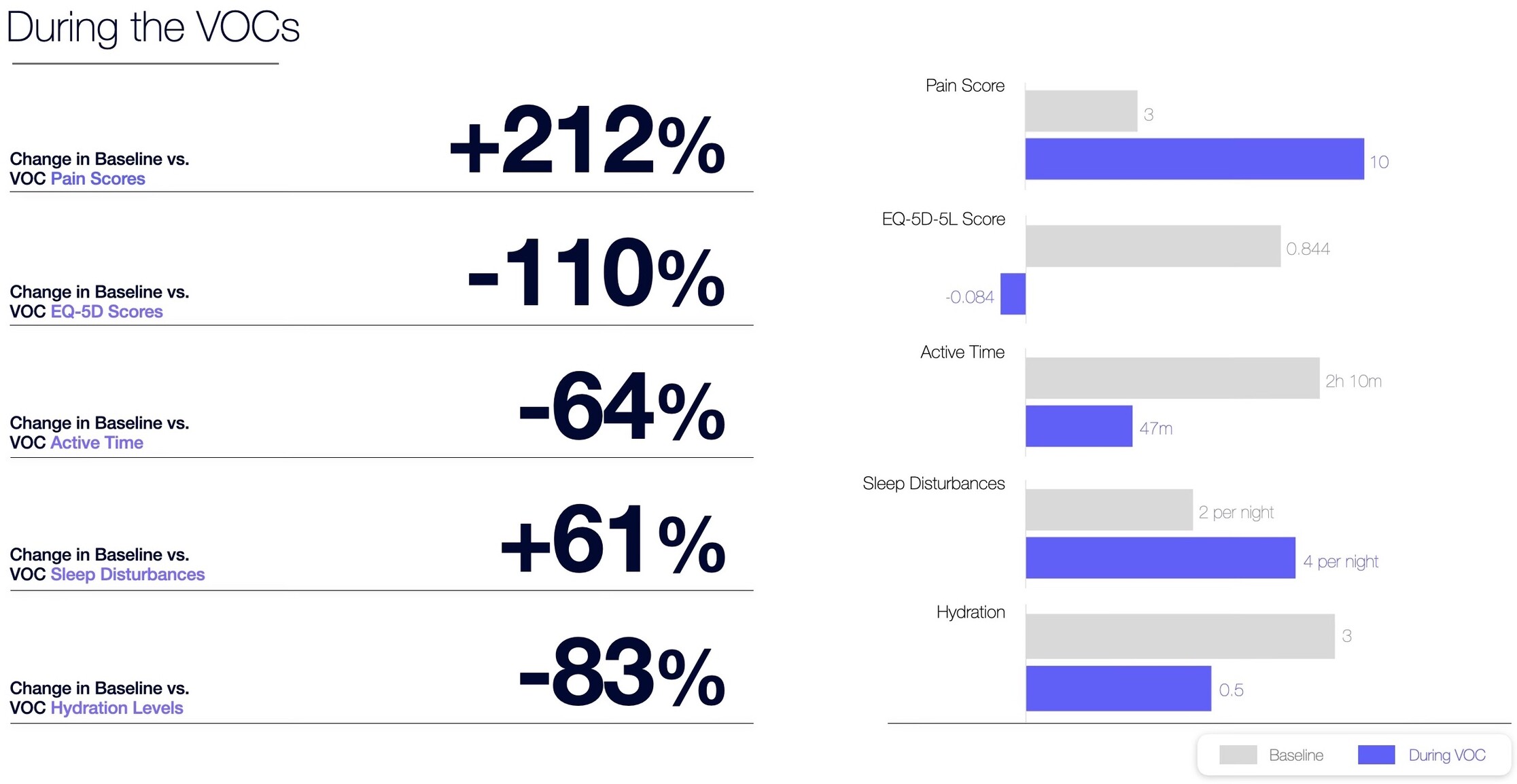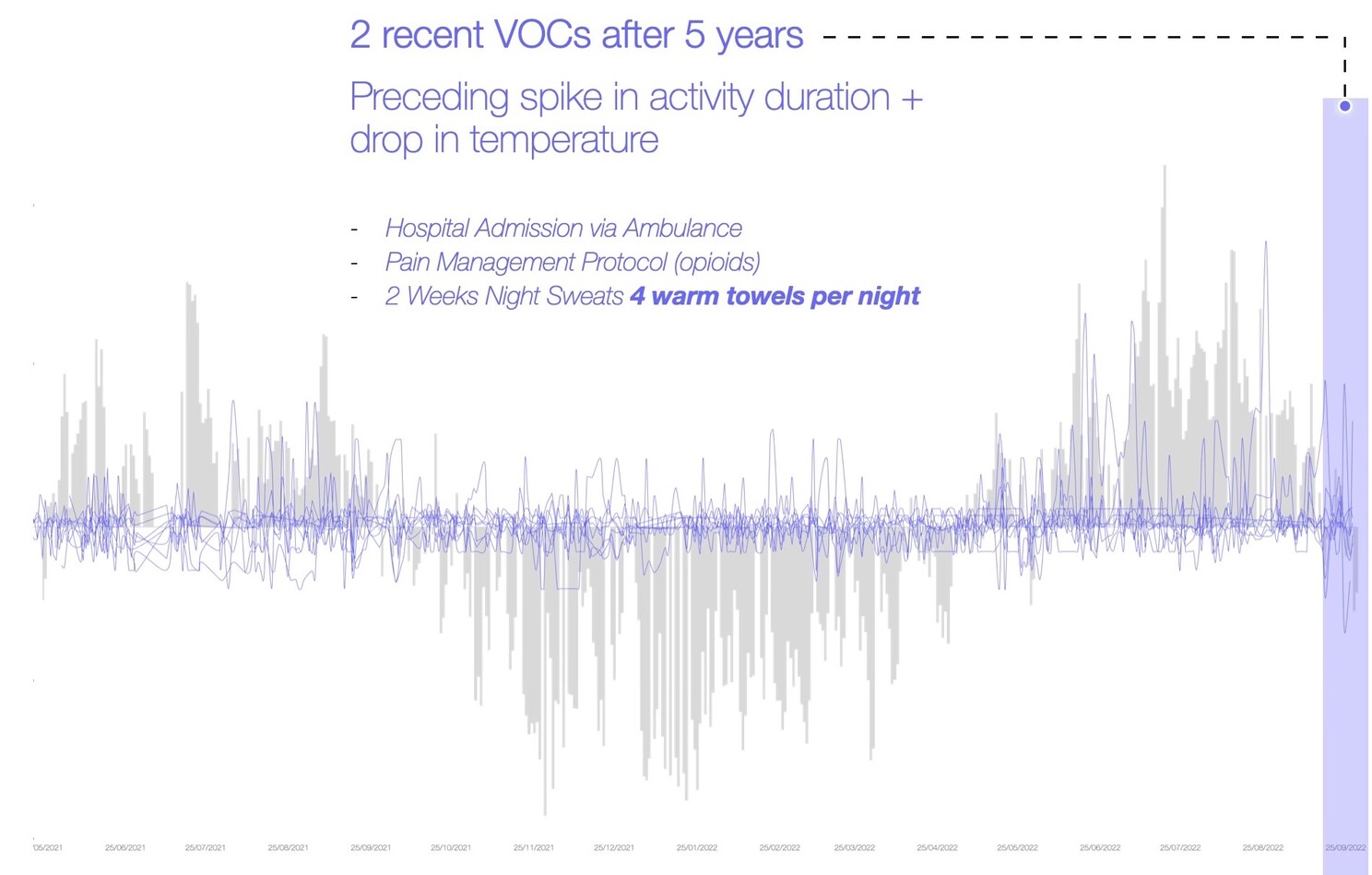Sanius Health at ASCAT 2022: Our Experience and Insights
Given the challenges that we are facing on a global level, it was great to meet colleagues at ASCAT 2022 who are focused on the same mission as us: to learn about the great developments happening in Sickle Cell Disease (SCD), and how these can be applied to better care, outcomes and opportunities for patients worldwide.
This year’s conference coincided with persistent uncertainty across the NHS, continued debates on the ‘No One’s Listening’ report and the new release of shocking statistics regarding SCD care. At present, colleagues at ASCAT revealed that only 20% of Trusts in the UK consistently meet the standard of giving SCD patients pain relief when they present at A&E with a vaso-occlusive crisis (VOC). Many of our own patients within the Sanius Health ecosystem have reported waiting for over 4 hours, and 17 hours at most, to be seen by emergency teams. Many practitioners, excluding consultants who have known our patients since birth, have struggled or hesitated to provide patients with needed medication and resources.
This variation in care administration has been nominally caused by a lack of SCD awareness or training in the health community and, at worst, prejudice against this patient demographic. As a community that struggles with health inequities and is poised to suffer disproportionately from rising living costs, it is important that their experiences are shared with others who are focused on improving their quality of life. Patient advocates, clinicians and SCD research pioneers meet at ASCAT to learn from those making tangible improvements for the SCD community. As one of the largest conferences focused on SCD, ASCAT 2022 is an opportunity for us to stand up for every Sickle Cell voice, experience and idea on how we can improve research, outcomes and life for all.
To advocate for our own patients’ experiences, Chief Patient Officer and Founder Orlando Agrippa shared the work that Sanius Health is doing to support patient outcomes. His presentation focused on how Sanius Health’s ecosystem could support answering a research question that patients, clinicians and researchers have tried to solve for years: how do we collect, monitor and use data to understand the circumstances around a vaso-occlusive crisis.

As a focal point for SCD care and research worldwide, the presentation highlighted how remotely capturing real-time vitals and quality of life metrics could help patients and clinicians anticipate adverse health events; and ultimately, protect patient outcomes in the future. The data shared in Orlando’s presentation reveal significant changes to baseline metrics during a patient’s experience of a recent VOC. Pain scores more than doubled compared to the patient’s baseline states, whereas activity time and hydration scores fell by -64% and -83% respectively. Given these changes to baseline quality of life and health scores, it is not surprising that data reveals that the patient’s EQ-5D fell by -110% during this VOC.

By providing a snapshot of live and recorded patient-reported outcomes, the Sanius Health presentation on our research demonstrated how our ecosystem works with clinicians and communities to unveil the complete patient journey through data and analytics.
Colleagues who presented alongside us at the Innovation Models in Haemoglobinopathies parallel on Thursday afternoon spoke on a number of topics, including integrating SCD care, improving chronic pain management and developing personalised health biomarkers to reduce VOC frequency. Dr. Deepak Darbari’s thoughts on integrating multiple therapies into SCD care protocols, as well as Dr. Iffy Osunkwo’s work in improving chronic pain management, spoke to an issue that SCD care practitioners are trying to address; namely, how the real-time application and response to individualised treatments can improve both short-term and long-term outcomes. In addition, Dr. Patrick Hines’ research on biomarkers to stratify individual patients and their risk of VOCs demonstrated the importance of working with real-time data to improve research and outcomes. We would like to thank Dr. Darbari, Dr. Osunkwo and Dr. Hines for sharing their compelling work, which will surely improve the lives of millions worldwide.
The perspectives proffered by patients who attended ASCAT echoed many of the concerns that on-the-ground clinicians are trying to address on behalf of the SCD community. Patient leaders, from Germany to the US, are pursuing advocacy work to ensure that their communities were being supported by their national health systems. From Elvie Ingoli (Germany) sharing the efficacy of SCD patients carrying care plan cards to Concy Bwomono sharing variation in care administration, these patient voices highlighted the reality of living with SCD and the need to collaborate in improving care at a global scale.
By sharing the progress that we are making on an individual and community-wide level, it is clear that our continued collaboration will catalyse more efforts to improve SCD care. We would like to thank fellow presenters, attendees, Baba Inusa and the conference organisers for hosting an event that brought every member of the SCD community together.
To learn more about the work Sanius Health is doing to support SCD patients, go to: www.saniushealth.com




